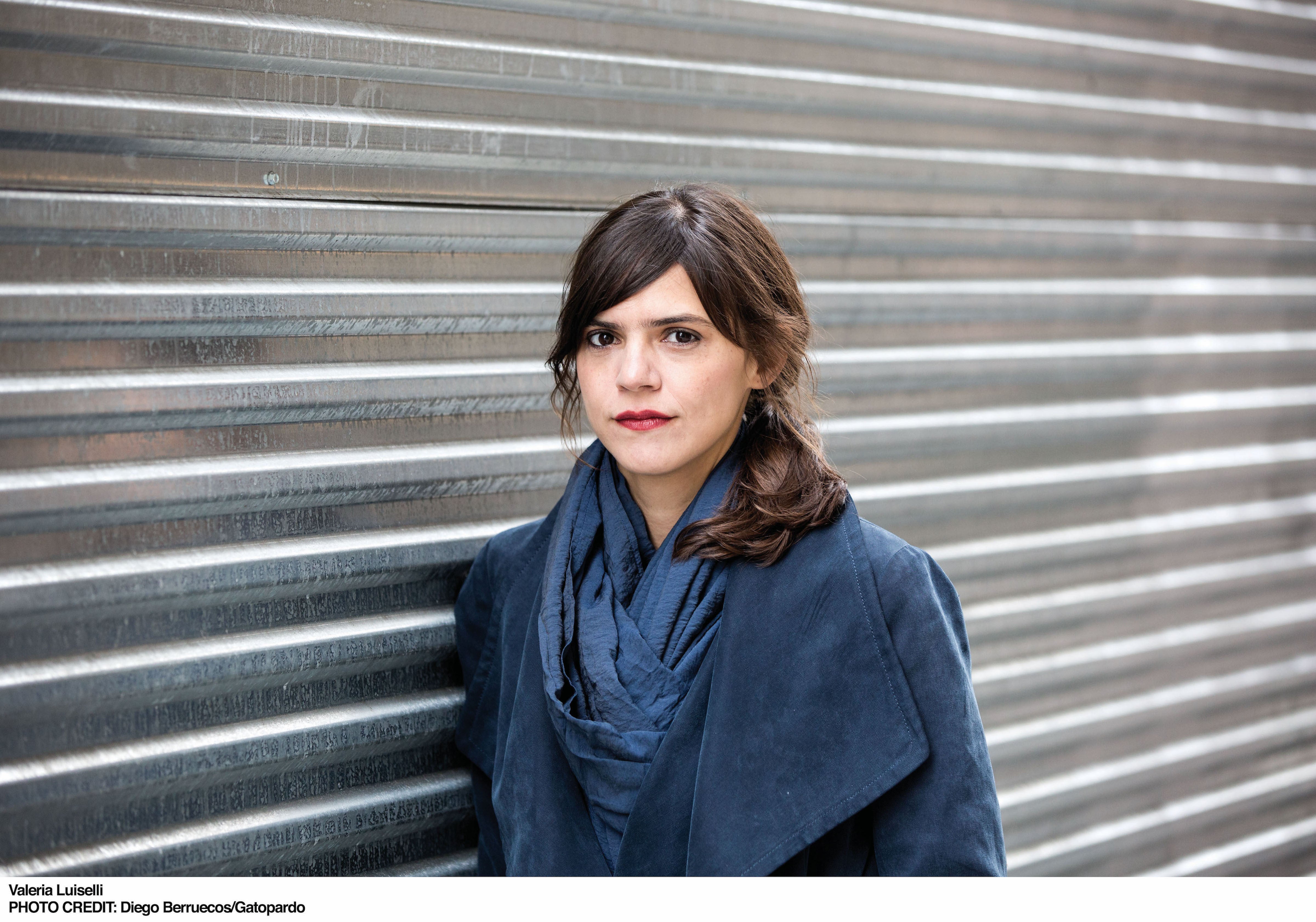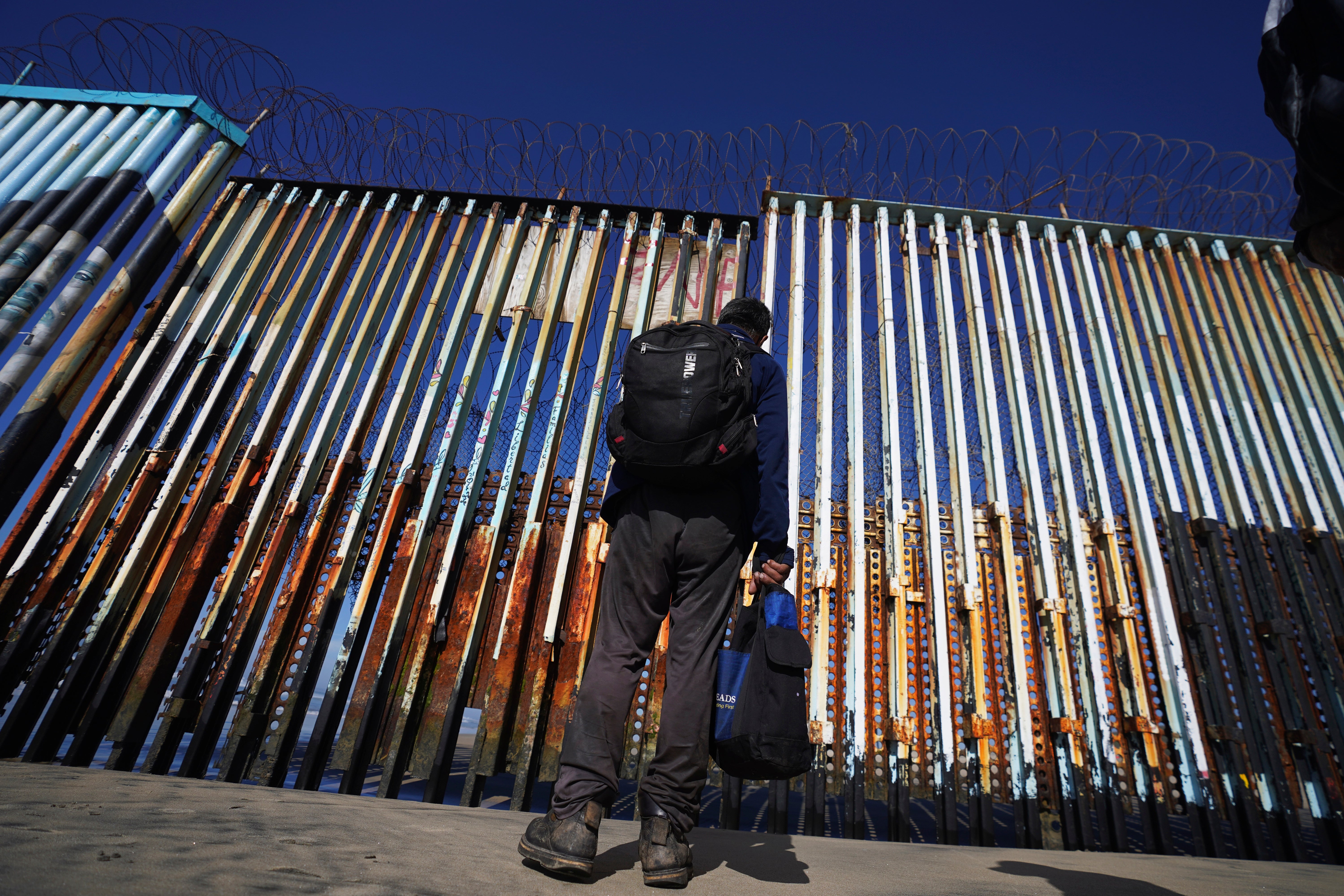Valeria Luiselli: ‘Borders are testing grounds for brutality’
The Mexican-born, New York-based author talks to Kevin E G Perry at the Santa Fe Literary Festival about finding herself as a writer, her work with unaccompanied children seeking asylum and her ongoing project to capture the borderlands in a sonic essay


Your support helps us to tell the story
From reproductive rights to climate change to Big Tech, The Independent is on the ground when the story is developing. Whether it's investigating the financials of Elon Musk's pro-Trump PAC or producing our latest documentary, 'The A Word', which shines a light on the American women fighting for reproductive rights, we know how important it is to parse out the facts from the messaging.
At such a critical moment in US history, we need reporters on the ground. Your donation allows us to keep sending journalists to speak to both sides of the story.
The Independent is trusted by Americans across the entire political spectrum. And unlike many other quality news outlets, we choose not to lock Americans out of our reporting and analysis with paywalls. We believe quality journalism should be available to everyone, paid for by those who can afford it.
Your support makes all the difference.Although a bustling audience has gathered to see author and immigration activist Valeria Luiselli speak at the Santa Fe Literary Festival, a hush falls over the room in anticipation of a preview of her current project. The silence is broken by the mechanical clanking of a copper mine and Luiselli’s recorded impressions mingling with the voices of miners and other locals who she met and interviewed around the border town of Bisbee, Arizona. The gorgeous, revelatory soundscape is just a 12-minute extract from a planned 24-hour sonic essay, Echoes From The Borderlands, which Luiselli is in the process of creating in collaboration with audio specialists Leo Heiblum and Ricardo Giraldo. She tells the assembled crowd she believes the format can help us slow down and appreciate stories in a deeper way than the relentless onslaught of visual media online. “You can’t scroll through sound,” she says with a smile.
Afterwards, backstage in the festival’s Green Room, Luiselli tells me that the idea to create an archive and document of life on the border first came to her in the town of Shakespeare, New Mexico. Originally a mining camp, Shakespeare became a ghost town and later a venue for Wild West reenactments, a place where men, dressed up as Billy The Kid, would hold shoot-outs with nameless caricatures of Native Americans and Mexican Bandits.
“This project started, in my mind at least, while I was interviewing a couple of reenactor cowboys about reenactment, and about what gets told, what gets reenacted and what is left out,” says Luiselli, who became determined to document otherwise forgotten stories. “At first I thought it was a four year project, but now I’m really thinking it’s a 10-year project. We need to get more funds for it. We have some support from a museum in New York, but it all hinges upon our capacity to travel and then to have time to transform what we gather during those very concentrated trips into material that’s going to be interesting.”
Luiselli has long been fascinated with stories about borders and the characters who inhabit in-between spaces. Born in Mexico City in 1983, Luiselli had a peripatetic upbringing that included time in South Africa, where her diplomat father opened the first Mexican embassy after Nelson Mandela’s historic election. She had a boarding school education in India. As an adolescent she thought she might become a professional dancer. “Contemporary dance was something I thought I was going to devote my life to for some time, but then I didn’t,” she says. “I wrote consciously from my late teens, I just never thought that one could become a writer, less so being a young woman. Things are different now, a little bit, but one had no references. Writers didn’t talk like you or look like you. In the case of Latin America, they were all men with tweed jackets smoking Gauloises. It didn’t seem at all like a likely reality.”
At the age of 18, Luiselli made a friend who confidently announced: “I’m a writer” and encouraged her to do the same. She was in her early twenties, attending graduate school at Columbia University in New York, when she began work on her first novel Faces in the Crowd. Although she had been largely educated in English, she purposely decided to write the novel in Spanish, titling the work Los Ingrávidos. Her second novel, The Story of My Teeth, was a finalist for the National Book Critics Circle award and was created in dialogue with workers at a Jumex juice factory in Mexico. She sent them chapters and they would reply with ideas which helped her shape the plot.

In 2014 Luiselli found herself unable to focus on writing her next novel because she was too distressed and disturbed by reports of thousands of unaccompanied children arriving at the United States’ southern border. The following year she began volunteering as an interviewer and translator in New York for some of the many child refugees arriving from Central America. “I couldn’t not get involved by that point,” she says. “It seemed, and seems, so difficult to wrap your head around the idea of children arriving alone and ending up in limbo. At first I was just translating testimonies and then I was doing the interviews myself and translating them into English in order to help the children find lawyers.”
Luiselli documented her experiences in her short 2017 book Tell Me How it Ends: An Essay in 40 Questions, which was based around the 40 questions she was instructed to ask in her interviews with the children. Her work also went onto influence and inspire her highly-acclaimed 2019 novel Lost Children Archive. She learned that the children who arrive at the border unaccompanied have usually travelled there on the roofs of La Bestia (“The Beast”), a network of freight trains on which half a million Central Americans travel treacherously each year. Often they are often fleeing gangs such as MS-13 and Calle-18 or other forms of structural violence.
Luiselli says that while Americans often say they’re sympathetic to the children’s plight, what they should really feel is a sense of “accountability and responsibility”. She adds: “Yes, it’s gangs, but it’s gangs among other things, and it’s a circumstance created by years of US interventionism in local governments, and then local governments being profoundly corrupt and working in unison with the interest of the United States, creating a kind of ongoing situation that’s only escapable really by migrating, and even then not entirely.”
The election of Donald Trump as President in 2016 on a platform of anti-immigration rhetoric only exacerbated existing problems, and Luiselli points out that even if things have improved since the election of Joe Biden in 2020 it’s only incremental. “For example, maybe less people are getting ankle bracelets when they are processed through the border,” she says. “They may be given cell phones to be surveilled instead, so it’s a little bit less violent to have a cell phone that a government agent uses to check in with you every week, as opposed to an ankle bracelet which is such a brutal and horrible thing, but it’s a question of degree.”
There are clear parallels between the ongoing situation on the US-Mexico border and the tragedies playing out on Europe’s border in the Mediterranean, which Irish journalist Sally Hayden wrote about so movingly in her recent book My Fourth Time, We Drowned. In both cases, border control is enforced through institutionalised violence. “It’s not a coincidence,” says Luiselli. “I think that whether it’s the Mediterranean or the border of the USA and Mexico, borders are testing grounds for brutality. A lot of new surveillance technology and logistics of incarceration get tested on the border, because it continues to be a kind of no man’s land. Those in power can get away with all kinds of horrors.”
![Hundreds of steel bollards and heavy machinery pictured in the Otay Mountain area of the US-Mexico border in September 2021. President Biden has said ‘no more American taxpayer dollars [should] be diverted to construct a border wall’](https://static.independent.co.uk/2021/09/30/21/242133393_10158103401571817_3853810471195065188_n.jpg)
Luiselli has found her purpose in drawing attention to these abuses of power, and the stories of those caught in circumstances far beyond their control. “I think the role of writers here is to make a problem known in its details,” she says. “We become interested and invested in the things that we know about, be it copper mining or immigration. So the more I think that one can educate oneself on the subject, the more we can partake and contribute in a meaningful way.”




Join our commenting forum
Join thought-provoking conversations, follow other Independent readers and see their replies
Comments